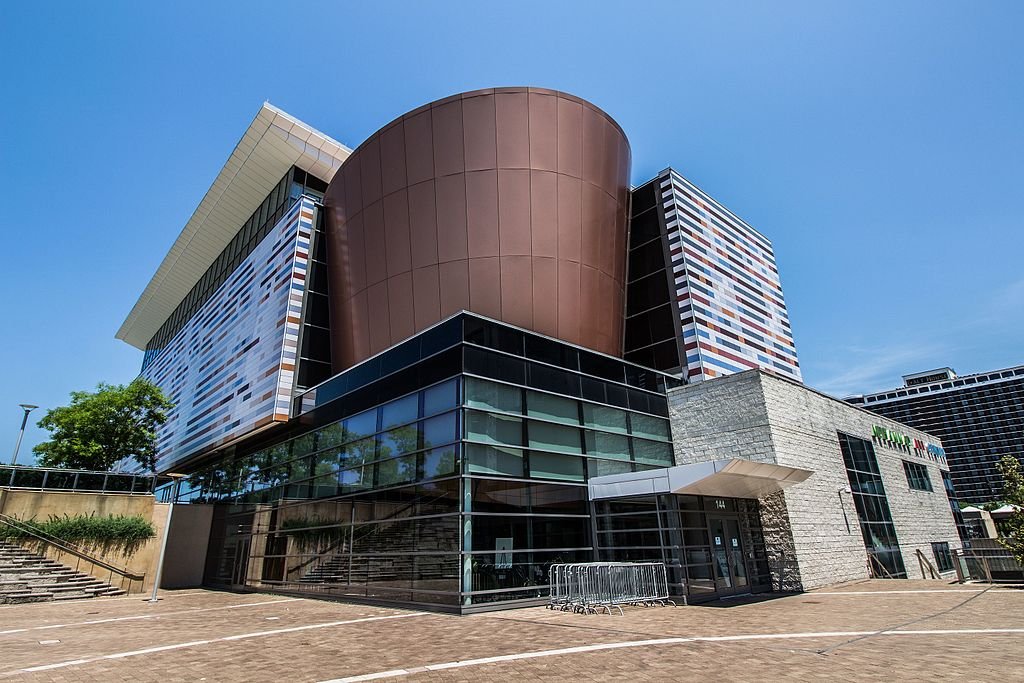The ‘I Was Here’ Project Will Help Visitors Explore Historical Significance Of African Americans In Downtown Louisville
The Muhammad Ali Center is a partner in the I Was Here project. Wikimedia Commons/Proof 377
Louisville Downtown Partnership and the office of Metro Council District 4 are sponsoring the first phase of the I Was Here project – a new augmented reality (AR) experience to engage downtown visitors interested in learning about Black American historical significance in the city’s business district, per a news release.
Roots 101 Museum and the Muhammad Ali Center will be partner sites for the project which features AR experiences, enabling downtown visitors to immerse and learn as they tour the area.
The project will allow visitors to witness an invisible history, examining who we are to each other, who we are as a nation and most importantly how we can work to repair the wounds created by enslavement. Ancestor Spirit Portraits have been installed in the Muhammad Ali Center. Additionally, there are five AR experiences. Sites include: the Muhammad Ali Center’s Main Lobby at 144 N. 6th St., Roots 101 Museum at 124 N. 1st St., Arteburn Brothers Slave Pen historic marker on 1st St. just south of Market St., Garrison Slave Pen historic marker at SE corner of 2nd and Main St., and the building opposite the Garrison Slave Pen historic marker, at 122 W. Main St.
Augmented reality experiences will be driven via a digital application (app) that will support the overall experience. The app is free and available on both iOS and Android platforms.
Click here for a preview of the artwork and visuals that will be displayed.
“While Black History Month is a critically important component of our cultural learning, Black History is American history and should be acknowledged every month,” said Rebecca Fleischaker, executive director of Louisville Downtown Partnership, in the announcement. “By infusing technology with public art and public history, this installation project recognizes the wounds and history, providing a unique forum for education, discussion and healing.”
The I Was Here project is originally based in Lexington, Ky., home to Cheapside, once the largest auction site of enslaved Africans west of the Allegheny Mountains.
“Black Americans are on every page of our nation’s history, but in most cases, we’re written in invisible ink,” said Metro Councilman Jecorey Arthur, District 4. “Our city, commonwealth, and country were built with our blood, sweat, and tears. This project will honor those contributions while offering hope to everyone continuing the fight.”
The Spirit Portraits embody Family: mother, father, brother, sister. The “here” of I Was Here begins with an honest look at the history of place. The portraits form cohesive, ethereal images that convey the dignity of the African American individual and family – imagery mostly lost in America’s visual history. Because of the unique melding of art, architecture, history and geography, the project has been awarded grants and honors from the American Association for State and Local History, National Endowment for the Arts, CODAworx, Kentucky Humanities, and the Blue Grass Trust for Historic Preservation, among many others.
“This project adds a new dimension to learning about Black History,” said Marilyn Jackson, president and CEO of the Muhammad Ali Center. “The AR experience provides an immersive and sensory snapshot of the past that you experience in the present. At the entrance of the Ali Center storefront, visitors will witness an ancestor spirit angel rising from the water to the soundscape of a motherless child. The emotional impact is something that cannot be replicated by reading textbooks. We are proud to be a part of the I Was Here project.”
The project creates a visual for an invisible history. Enslavement was – and remains – a raw wound for innumerable communities. The I Was Here project cements its centrality to US history, our economy and to the contemporary experiences of countless Americans. Such a lens can be difficult and requires both an ethic of care and a steel backbone. I Was Here establishes a mindful, reverent, and powerful acknowledgment of American history. The project invites, as much as it prods, visitors to allow this acknowledgment to hold public space and to accept the echoes layered into the project’s name: I Was Here.
“We were bulldozers for bulldozers, jackhammers before jackhammers, and Engineers before engineering degrees,” said Roots 101 founder and owner Lamont Collins. “We built the place we call America.”
Alongside the I Was Here project, the Frazier History Museum has introduced its new exhibit, The Journey, stories of the Underground Railroad and the hidden stories of people and places in our community with close ties. These two exhibits together demonstrate a fuller “journey”. Visit https://www.fraziermuseum.org/the-journey for more information.
A second phase of the I Was Here project will be dependent upon future funding and is under development.


